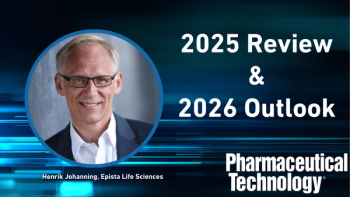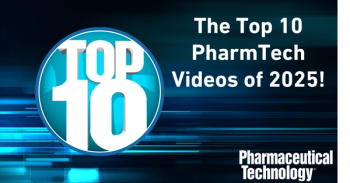Editor’s Note: This article was published in Pharmaceutical Technology Europe’s January 2021 print issue.
- Pharmaceutical Technology-01-02-2021
- Volume 45
- Issue 1
Strategizing for Strength in EU Pharma
The recently published European pharmaceutical strategy is being seen as an opportunity to strengthen medicines regulation in the region.
The European Union’s pharmaceutical strategy has finally been issued by the European Commission (EC) to provide an EU policy and legislative framework for medicines over the next several years. The document has been welcomed by industry because it should give a sense of direction to the medicines authorization agencies at both the EU and national levels. This is despite the prospect that it will lead to more legislation and to bring regulations into relatively new areas.
“The pharmaceutical strategy is absolutely critical, not just for our industry but other industries as well [since] it is the first time we have a pharmaceutical strategy,” said Nathalie Moll, director general of European Federation of Pharmaceutical Industries and Associations (EFPIA), in an internal interview for an EFPIA blog in November 2020 (1).
A strengthening opportunity?
The strategy is seen by the EC as providing an opportunity for the EU and its 27 member states to deal with the weaknesses in the pharmaceutical controls system revealed by the COVID-19 outbreak.
“Though Europe’s response has demonstrated strengths,” the strategy document reports, “existing vulnerabilities have been thrown into sharp focus, including those related to data availability, the supply of medicines, or the availability of manufacturing capacities to adapt and support the production of medicines” (2).
However, the broad objective behind the strategy is to bring the pharmaceuticals sector in Europe, the world’s second largest medicines market and a powerhouse in pharmaceuticals innovation, into line with changes aimed at transforming the region into a low carbon economy. Under the 2015 Paris Agreement on limiting global warming (3), the EU is committed to reducing carbon emissions by 55% by 2030 and to achieve net zero emissions by 2050.
As a result, a lot of the strategy’s proposals stem from the European Green Deal, published in late 2019 (4), from which has emanated last year’s EU industrial strategy (5). This Industrial Strategy focuses on the development of ‘enabling’ technologies such as pharmaceuticals, particularly biomedicines. Emerging biopharmaceutical companies account for more than 70% of the European pharmaceutical sector’s research pipeline.
Achieving autonomy
An important element of the industrial strategy is ways of achieving ‘strategic autonomy’ by reducing the region’s dependence on others for critical products and their raw materials—such as pharmaceuticals. With medicines, this means ensuring the availability and security of supplies, which the COVID-19 pandemic has shown—at least initially—to be a major weakness in Europe’s healthcare system.
The solution to the problem—proposed in the pharmaceutical strategy—is for the EC to take a more active coordinating role in protecting health during emergencies. The objective would be to create more solidarity between states as an alternative to unilateral action by individual EU countries.
The commission is aiming to build a strong European Health Union in the public health field, enabling EU countries to prepare for and to respond together to health crises, as well as to combat diseases like cancer.
Among the commission’s proposals are the declaration of emergencies at EU-level combined with EU measures and harmonization of EU national and regional preparedness plans, which would be regularly audited.
With the greater centralization of preparedness and responses, bigger roles will be given to two main EU agencies—European Centre for Disease Prevention and Control (ECDC) responsible for epidemiology and dealing with communicable disease and the European Medicines Agency (EMA).
ECDC will monitor infectious disease outbreaks using common standards and definitions. It will also carry out risk analysis, modelling, and assessment of healthcare capacities for specialized treatments. It will also have the task of deploying an EU Health Task Force to help local response in EU countries.
EMA’s role in crisis management will be to monitor and mitigate shortages of medicines as well as medical devices. It will also advise on medicines that can treat, prevent, or diagnose diseases that can cause emergency crises.
Dealing with health emergencies
In addition to giving the extra responsibilities to ECDC and EMA for dealing with health emergencies, the commission is planning to set up a health emergency preparedness and response authority (HERA), details on which were published in a communication two weeks before the pharmaceutical strategy was issued (6).
The new authority will support the development of crosscutting technologies and solutions on multiple potential future threats, such as vaccine platform technologies, the application of digital tools and artificial intelligence as well as the development of specific countermeasures, including through clinical trials designs and data infrastructure. One of HERA’s tasks will be ensuring that sufficient production capacity will be available for new medicines, and that there are proper arrangements for stockpiling and distribution.
The commission has proposed that various existing ad hoc and advisory groups dealing with medicines shortages and availability should be made part of EMA’s permanent structure under new legislation because of the agency’s extra responsibilities for tackling shortages.
The groups include two separate expert steering bodies on medicines and medical devices shortages and scientific groups on new medical treatments. Their permanent transfer to EMA could blur the dividing line between the agency and HERA.
The transfer of the medical devices steering group into the EMA is a significant expansion of the agency’s jurisdiction because currently it has only limited regulatory competence with devices. Furthermore, EMA will also host medical devices expert panels on a permanent basis, which can play an essential part in clinical preparedness and crisis management during emergencies.
EMA’s job will be to monitor medicines supply in advance of a possible crisis in availability. “To support such work, obligations will be placed on marketing authorization holders and member states to provide the necessary data through streamlined IT tools,” according to the commission.
Among the legislative proposals in the pharmaceutical strategy for dealing with shortages are stronger obligations on industry to ensure the supply of medicines, earlier notification of shortages and withdrawals, and enhanced transparency of stocks across the supply chain. In addition, member states would have to improve their procurement strategies and do more joint procurement of critical medicines.
Reshoring supply
The commission is considering measures to help the possible reshoring from Asia to Europe of the production of critical medicines, APIs, and their raw materials and intermediates. This is because [medicines] supply chains have become increasingly unreliable and fragmented with several different companies with varying levels of competence involved in the manufacture of the same product.
But setting up critical medicines production capacity in the EU would have to be compliant with the Union’s competition rules and those of the World Trade Organization, the commission warned (2).
More transparency among companies features prominently in the commission’s proposals for pharmaceuticals in the environment (PIE) and on the continuous oversight of medicines during their entire life cycles through to disposal.
Last year’s discovery of contamination of several drugs by nitrosamines showed the need for a strengthened oversight of global pharmaceuticals manufacturing with more transparency across supply chains. “The accountability of all actors for the quality of the medicines is essential, but especially that of the marketing authorization holders,” said the commission (2). “Compliance with good manufacturing and distribution practices should be enhanced.”
Going green
The European Green Deal with its ambition for zero pollution will be putting pressure on the industry to reduce resource use, emissions, and levels of pharmaceutical residues during medicines’ life cycles.
In a proposed review of current pharmaceutical legislation, the commission aims to look at rules on environmental risk assessments (ERAs) for the authorization of medicines so that sustainability and climate neutrality becomes the ‘driver’ in the industry.
Also, through international cooperation, the EC will be urging action on combating environmental risks posed by waste discharges from pharmaceutical plants, particularly in the spread of antimicrobial resistance. It will be suggesting that the use of good manufacturing practices (GMP) should be assessed as a means of addressing this problem.
ERAs and the extension of GMP to plant discharge controls have been two areas in which the commission has previously been reluctant to press for changes. The pharmaceutical strategy indicates a new willingness to shift medicines regulation into new territories.
References
1. EFPIA, “Will EU Pharmaceutical Strategy help Europe to Become a World Leader in Medical Innovation Once Again?” Press statement and podcast, 25 Nov. 2020.
2. EC, “Pharmaceutical Strategy for Europe,” ec.europa.eu, Communication, 25 Nov. 2020.
3. United Nations Framework Convention on Climate Change, “Paris Agreement” (Paris, 12 Dec. 2015).
4. EC, “The European Green Deal,” ec.europa.eu, Communication, 11 Dec. 2019.
5. EC, “A New Industrial Strategy for Europe,” ec.europa.eu, Communication, 3 March 2020.
6. EC, “Building a European Health Union: Reinforcing EU’s Resilience for Crossborder Health Threats,” ec.europa.eu, Communication, 11 Nov. 2020.
About the Author
Sean Milmo is a freelance writer based in Essex, UK.
Article Details
Pharmaceutical Technology Europe
Vol. 33, No. 1
January 2021
Pages: 8–9
Citation
When referring to this article, please cite it as S. Milmo, “Strategizing for Strength in EU Pharma,” Pharmaceutical Technology Europe 33 (1) 2021.
Articles in this issue
almost 5 years ago
Bringing Bio/Pharma’s “New Normal” Into Focusalmost 5 years ago
The Outlook for a Year of Changealmost 5 years ago
Compensation Does Not Necessarily Align With Job Satisfactionalmost 5 years ago
Talent-Driven Market for Laboratory Techniciansalmost 5 years ago
ECHA’s Microplastics Use Restriction—Impact on Pharmaceuticalsalmost 5 years ago
FDA Ends 2020 with High Drug Approval Ratealmost 5 years ago
Overcoming Biologic Drug Formulation Hurdlesalmost 5 years ago
Choosing a Cleanroom Infrastructure Technologyalmost 5 years ago
COVID-19 Vaccine Distribution: Preparing for the Unexpectedalmost 5 years ago
FDA Inspections Remain Stalled During the COVID-19 PandemicNewsletter
Get the essential updates shaping the future of pharma manufacturing and compliance—subscribe today to Pharmaceutical Technology and never miss a breakthrough.





